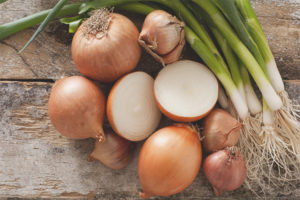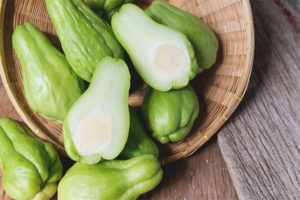The content of the article
Many owners love a universal crunchy sauerkraut appetizer that can be enjoyed all year long. It is unpretentious, suitable for dressing many salads and hot dishes, moreover, it is perfectly stored. However, not everyone succeeds in making the workpiece correctly - sometimes the cabbage turns out to be soft or slippery, and sometimes it even starts to smell unpleasant. Let's reveal some secrets: how to avoid mistakes and cook delicious sauerkraut.
What kind of cabbage you need to choose for harvesting
The key to a tasty result in cooking is always fresh, suitable raw materials and compliance with the cooking technique. Therefore, at the first stage, it is important to choose the right heads:
- Only pickled cabbage is suitable for pickling. In early green varieties there are no substances necessary for fermentation, so the cabbage will turn out soft and shapeless. To pickle pick hard white cabbage, which managed to accumulate enough sugar.
- It is forbidden to take frozen or spoiled fruits - because of this, the entire batch may deteriorate, bitter, or even rot.
- Freshly picked cabbage is not recommended to be cut right away, you need to let the crop lie down - then the dish will be crispy and moderately sharp.
Important: a bitter aftertaste or mucous membrane may appear if the fruit was fertilized with nitrates. Therefore, it is necessary to take homemade cabbage or strictly seasonal vegetables from the local base for harvesting, where heavy dressing is not exactly used.
How to cook sauerkraut: crucial tricks
A few simple recommendations will allow you to cook the cabbage correctly, so that it crunches and combines the ideal proportions of sweetness, acid and salt.
- In order for the cabbage to retain its elastic shape, it must not be too wrinkled during pouring with salt. Nevertheless, the product must empty the juice, so it is tamped with a wooden mallet, and a load is always put on top of the prepared raw materials in a barrel or jar.
- Adding sugar to sauerkraut is risky. Because of this, cabbage can ferment and deteriorate too quickly in the heat. Therefore, they choose a sweet variety, but in addition sugar is not poured into the billet.
- For flavor, carrots are added to cabbage, but here it is also important not to overdo it. For every kilogram of cabbage, 30 g of grated carrots is enough.
- Also, for crunch and spicy aroma, bay leaf and peas are useful - a little thing for every 1-2 kilograms will be enough. The tannins of laurel will not let the cabbage rot and fade.
- Experienced housewives recommend shredding cabbage across the veins, then it will better maintain its density and shape.
- If slicing gives little juice, it is permissible to add boiled water. The brine is made at the rate of 1.5 tablespoons of salt per 1 liter of water.
- Every couple of days, a covered container needs to be opened and a cabbage is pierced so that gases are released from the thickness of the mass - it is precisely because of their excess that the cabbage can turn out to be soft, mucous and even darken.
- It is also important in what capacity the dish is prepared. Sauerkraut in wooden or enamel barrels, or in glass jars. In a metal container, cabbage instantly darkens and oxidizes.
- You need to keep the cabbage during the fermentation at medium temperatures, and when ready, put it in the cold. If the temperature is above 18-20 degrees, cabbage can peroxide ahead of time, and in the cold - on the contrary, do not salt out. For each kilogram of raw straw, 20 g of salt is taken, more is not scary, but then as a result the dish will be salted to taste.
If the ready cabbage is spoiled

It happens that the owner's efforts were unsuccessful - the cabbage darkened, became soft and not appetizing. If the product tastes quite edible, it just has an unattractive appearance, it can still be used by adding to the soup, stew or letting dumplings and pies on the filling. A long and intensive heat treatment will protect the dishes from bad bacteria, and cabbage will be safe.
If the product is peroxide or covered with mucus with an unpleasant odor, you will have to get rid of such an appetizer to avoid poisoning.
Work on bugs: what you need to remember in order not to spoil the dish
If you did not succeed in sauerkraut before, remember what mistakes you could make:
- The cabbage should be covered with juice, otherwise it will not salt out, but may go by mucus.
- When harvesting, you can not use iodized salt, but it is best to choose coarse-grained. The brine should be strong, but it is not necessary to crush the cabbage, after tamping, it will start the juice itself and then it will turn out elastic and crispy.
- From time to time, you need to stir up the cabbage, releasing carbon dioxide, otherwise it will get an unpleasant odor.
- Frozen cabbage can be bitter or have an unpleasant sweetish taste, so you should not choose cellars and keep shredded cabbage in the cold.
- Sour or too harsh cabbage can come from sugar or when kept warm. The optimum room temperature is from +17 to +22 degrees. You can put the vat on the windowsill if there is no incandescent battery under it.
- If the cabbage is lightly salted or cooked unevenly, it is possible that there is no press. Use enough salt and squeeze the raw materials. You can put the cabbage in an enameled bowl or pan, cover with a plate and put a bottle of water on top. If you ferment immediately in a jar and cabbage gives enough juice, do not forget to ram it with a rolling pin periodically - this simultaneously compresses the product and releases excess gas.
If the cabbage is very salty or acidic, you can soak it in hot water before use. Such a product will brighten up a sour first course or vinaigrette well. But it’s better not to cook flour recipes with it. Sweet and sour berries such as viburnum, cranberries, cloudberries, as well as bay leaves, coriander and celery, which are sometimes fermented with cabbage, significantly improve the taste of such an appetizer.
Video: cabbage pickling secrets










Submit